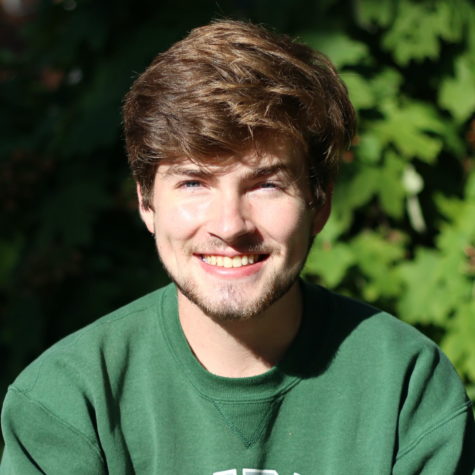Editor’s Note: (Re)introducing The Observer
August 21, 2020
Needless to say, the logistical difficulties and uncertainty facing Case Western Reserve University as a whole due to COVID-19 will also challenge The Observer this coming semester. Half of our staff will be off-campus, including myself. We will be doing all our production work remotely. And, journalism, further, is all about talking with people, connecting and telling stories. In the time of COVID-19, this is risky and difficult.
All that means, though, is that we need to adapt and be more diligent about covering the things important to CWRU students. As the voice of student concerns and interests, The Observer is essential to developing and maintaining CWRU’s community. We help hold the administration accountable, alert students to opportunities off-campus and recognize our remarkable student-athletes, just to start. These are important functions, and we love doing them. Although none of us ever expected to be faced with challenges quite like the ones we’re faced with now, we at The Observer are dedicated to presenting the news as best we can.
In fact—not to sound too much like a cliche—there’s opportunity even in these trying circumstances. This semester, we intend to further explore modern and creative approaches to digitally telling stories and distributing the news.
In lieu of a print paper, we will continue to use the newsletter format we developed after being sent home in the spring throughout the duration (at the very least) of the coming semester. This decision was not made lightly—after all, the experience of actually holding the news in your two hands is certainly special—but, ultimately, the health and safety of our staff and our readers is of paramount importance.
This digital method of content distribution—a weekly email with our top stories and other updates that you can sign up to receive on our website’s homepage—will allow us to more easily pursue forms of media that we previously couldn’t as a print-first news organization.
Back in the spring—post–COVID-19 outbreak—Copy Editor Jackson Rudoff, then a staff reporter, produced the first photo essay The Observer has published in a long time. Titled “My life as an essential worker: a photo essay,” Rudoff’s piece uses photos and words to explore his experience working at an ice cream shop in the middle of the worst pandemic in the last 100 years.
Photo essays like Rudoff’s are one of the types of digital content that we intend to continue developing over the course of this semester. Everyone has heard the adage “a picture is worth a thousand words.” Well, in the news, this time-honored claim is certainly true. Photos can convey feelings of sadness or joy, rage or hope that words just can’t do justice. Further, pursuing photojournalism will help our reporters and photographers learn new skills and fine-tune their storytelling abilities. I, certainly, am excited to try my hand at taking pictures!
Video is the other main form of digital content we plan on expanding in the coming months. Like with photojournalism, we began working to improve our video content last year. Last spring, we published three videos to our YouTube: “2020 USG Spring Candidates Debate,” as well as a separate portion dedicated to the presidential debate, produced by former Executive Editor Matt Hooke, and “Cuisine in the Circle: Making a Breakfast Sandwich with Fluffy Duck Café,” produced by Henry Bendon, a prolific staff reporter. Both Hooke and Bendon have since graduated.
While a good start, three video pieces over the course of a year are not quite where we want to be; we are hoping to build a video team that can produce pieces much more regularly. Video content is important, because, like photos, the medium is suited to convey ideas, feelings and information that the written word is less suited for.
If you have any interest in producing or learning how to produce these types of content, please reach out to us through the “Join Our Team” page on our website. We welcome anyone with a desire to tell stories.
As well as striving to better our content and storytelling, we also plan to improve the reader experience. Firstly, we will continue tweaking our newsletter’s design and usability. Specifically, we want to make the format more interesting and better incorporate visual content. Although still in the early stages, we are also exploring the possibility of developing a mobile app tied to our website that would allow readers to pick-and-choose the content they want to see. The biggest change we plan on making, though, will be to the use of our website and its construction. We will be linking further video content to the website, instead of solely through YouTube, and we will be using the website’s capabilities to better display future photo essays. We also intend to do some basic streamlining of the website, removing any dead links or functions that are no longer relevant to our readers. In total, we hope to create a measurably improved experience for our readers.
I am excited about these changes and about the future of The Observer. Although times are tough, we are committed to bettering ourselves, promoting justice and telling the innumerable stories of CWRU. Together, we will make it through whatever happens this semester.


